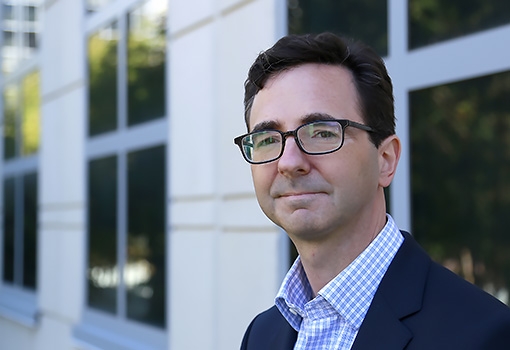Professor Michael Chabinyc, chair of the Materials Department at the UC Santa Barbara College of Engineering, has been named a Fellow of the Materials Research Society (MRS), a distinction that “recognizes outstanding contributions to the field, including research, leadership, and service that have advanced the mission of the materials community world-wide.”
Chabinyc was cited specifically for “his contributions to the fundamental science of the structure and electronic properties of organic semiconductors and the translation of these relationships to functional devices.”
“It’s a pleasure to congratulate Michael Chabinyc on being named an MRS Fellow,” said Rod Alferness, dean of the UCSB College of Engineering. “Michael is not only an outstanding materials scientist and engineer whose research contributes in many areas of life, but he is also an outstanding teacher, a caring mentor, and a generous and amicable colleague.”
“I am honored to be elected as a fellow of the MRS and thank my students and my many collaborators for all of the great research over the years,” Chabinyc said, adding, “The emphasis on multidisciplinary research at UCSB is perfect for making advances in new areas. My group greatly benefits from interactions across departments and from the shared research equipment on campus.”
Chabinyc’s research is focused broadly on organic electronic materials, with a particular focus on thin-film materials. These carbon-based materials are made up of long chains of molecules, similar to plastics, yet they have properties comparable to electronic materials, such as the silicon in computer chips.
Organic semiconductors can be dissolved and printed as an ink, allowing for simple manufacturing of displays, like those that wrap over the edges of smart phones or enable curved television screens, and lightweight solar cells. Chabinyc’s group studies how ordered structures form in semiconducting polymers and how it impacts their electrical performance in various applications.
The Materials Research Society was founded in 1973 and has over 14,500 members from more than 90 nations. The mission of the MRS is to “promote communication for the advancement of interdisciplinary materials research and technology to improve the quality of life.”
According to MRS materials, being named a fellow “is intended to be a lifetime recognition of distinction in the field, rather than an award for a specific achievement.” Only .02% of the current total professional MRS membership can become fellows in any given year.

Materials professor and department chair, Michael Chabinyc
